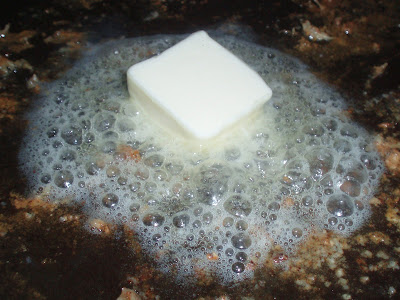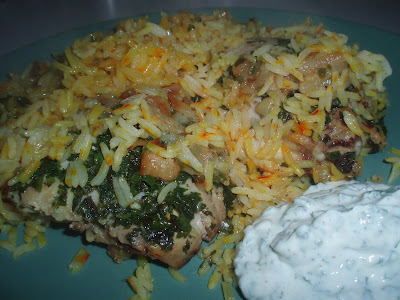Part two of our amazing
Saturday night...the beverages! Descriptions provided by The Sommeliatrix.

2007 Vin de Savoie Apremont (Allee du Colombier) Butting up against the Alps, a very spread out 1,800 hectares of vineyards scattered from south of Lac Léman (Geneva) in Haute Savoie, down to the Isère Valley and Chambéry on the borders of the départements of Savoie and Isère. Savoie wines are consumed mainly in the ski resorts of the area. Production is 70% White wine. Blend of Aligote, Altesse, Jacquere, Chardonnay, Mondeuse Blanche, Velteliner.
Image a great picture of an
Anton Bauer bottle of
Gruner Veltliner Gmork
2007 Grüner Veltliner Gmörk (Anton Bauer) Bright, ripe aromas of Granny Smith apples and clean citrus fruit dominate the nose of this wine. On the palate, the wine possesses crisp acidity as well as clean, pure citrus flavors that keep you coming back for more. This wine makes the ideal aperitif, but works equally well with fresh vegetables, fish dishes, fried chicken and of course, Wiener Schnitzel.

2006 Le Clos Delorme, Valencay A happy little blend of hand harvested 40% Gamay, 30% Cot (Malbec), 20% Cabernet Franc and 10% Pinot Noir all grown in sand, gravel and clay soils and then fermented and aged in tank. This wines reminds me of a Cheverny Rouge, with more depth, structure and a bit more muscle. A truly fun wine to drink!!! According to Wine & Spirits: "The firm structure and refreshing acidity of this juicy blend of gamay, malbec, cabernet franc and pinot noir, keep it lively throughout the succulent finish."

The Moscato Bianco grape is an extremely ancient one, the origins of which are not precisely known. Wines from this grape were first developed as still wines in the 17th century under the patronage of the House of Savoy, when refined methods of cultivating and vinifying this difficult variety were discovered. The cool, steep Langhe hillsides of Asti and Cuneo, near the town of Canelli, remain the principal center of production for Moscato d'Asti (hence, the alternate name, Moscato di Canelli). Calcium-rich, chalky soils produce the most fragrant Moscato Bianco grapes, and an excellent exposure is essential to bring the fruit to perfect maturity.
Nivole is produced from a single vineyard at Torre de Cantini located in the commune of Canelli and situated on steep slopes of a gradient of approximately 35 degrees with an exposure facing south-southwest. Vines are planted to a density of 4,000 per hectare, with an average age of 25 years. Once harvested, the handpicked grapes are placed in pneumatic presses and once extracted, the must immediately lowered to a temperature of zero degrees centigrade (32 F) to prevent the onset of the alcoholic fermentation. The must is kept in this fashion until just before bottling, at which point the temperature is allowed to rise to 18 degrees centigrade (65 F) and the top of the tank is opened. A slow fermentation provoked by natural yeasts then ensues which is allowed to progress until the wine reaches an alcohol level of 5.5 percent and is then stopped by a sterile filtration which removes any remaining live yeasts. Residual sugar is adjusted to 11 percent by the addition of unfermented must of the moscato grape. The wine is then fined, filtered and immediately bottled. This technique preserves the characteristically aromatic, sweet fruit fragrance of the grape unique to Moscato Bianco.
Moscato d'Asti is one of the most sublime and delicate of all dessert wines, which should be consumed at its freshest and most youthful. Its very low level of alcohol makes it particularly light and soft on the palate, and especially gentle for consumption after dinner, when wines of greater alcoholic content have typically been consumed beforehand. The name "Nivole," which means "clouds" in Piedmontese dialect, appropriately suggests the wine's airy, elegant quality The fragrant, intensely fruity bouquet, offset by musky notes, leads to a refined sweetness supported by an excellent acid balance on the palate, with a suggestion of effervescence in the texture. The finish is clean and crisp, with a persistent flavor of grape and citrus characteristic of the variety.

Brasserie Mont Blanc Verte. A unique beer combining our excellent brewing reputation with a local Alpine flower, the Genepi (Artemisia Genepi, Glacialis, and Mutillena). This plant (from the wormwood family) has high digestive properties, and is at the heart for the famous Grande Chartreuse liqueur.
Brasserie Mont Blanc opens its doors in 1830. Due to its closeness to Switzerland and Austria, the first beer styles there were Munich and Pilsner ones. This is an excellent example where the purity and low mineral content of the water (from the Enchapleuze spring at 2074 meters in altitude) used is a key element to the bright pure styles and flavors of this brewery. As you will taste, the different beers produced now have their own personality, reflecting more their own alpine environment. They are moderate in alcohol content (4.7% to 5.9%) yet quite flavorful.
Oh Fun!
 The dressing; a lemon Chardonnay vinaigrette! Tasty.
The dressing; a lemon Chardonnay vinaigrette! Tasty. The dressed salad with bacon, home-made croutons and a side of oven pomme frites.
The dressed salad with bacon, home-made croutons and a side of oven pomme frites. Top with a soft poached egg. Add some freshly cracked pepper and pinch of salt.
Top with a soft poached egg. Add some freshly cracked pepper and pinch of salt. Dig In! The preferred salad would be frisée, but Giant didn't have any-go figure, so I got a bag mix of baby arugula mix, which had a small bit of frisée in it. It worked...and I'm not fond of arugula.
Dig In! The preferred salad would be frisée, but Giant didn't have any-go figure, so I got a bag mix of baby arugula mix, which had a small bit of frisée in it. It worked...and I'm not fond of arugula.













































